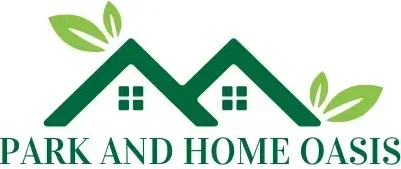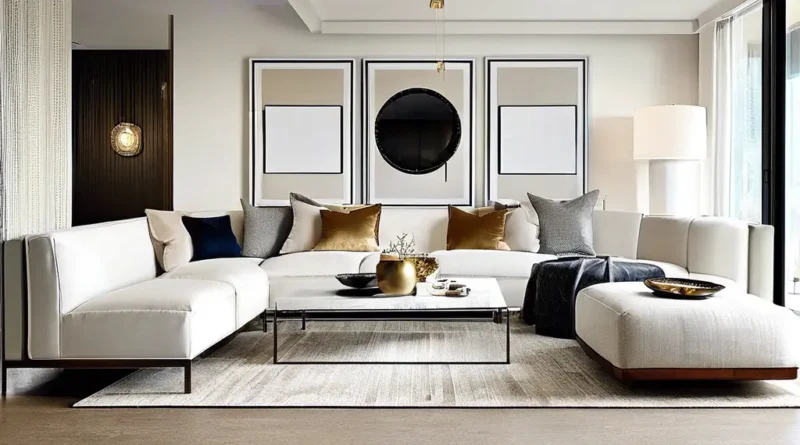Best Trends in Interior Design for Modern Homes 2025
Table of Contents
Introduction: The Evolution of Interior Design Trends
Interior design trends have continuously evolved over the decades, reflecting changes in cultural, economic, and technological contexts.
Key Influences on Interior Design Trends:
- Historical Movements:
- Art Deco
- Mid-Century Modern
- Postmodernism
- Technological Advances:
- Smart home integrations
- Sustainable materials
- Cultural Shifts:
- Minimalism
- Maximalism
- Global influences
Interior design trends are shaped by individual preferences as well as broader socio-economic factors. The shifting landscape of interior design showcases the dynamic interplay between aesthetic aspiration and functional innovation.
Minimalism: Less is More
Minimalism emphasizes simplicity, functionality, and clean lines. This design trend focuses on eliminating clutter, promoting a sense of calm and spaciousness.
- Neutral Color Palette: Predominantly whites, grays, and earth tones.
- Functional Furniture: Pieces serve multiple purposes, combining style with practicality.
- Open Spaces: Floor plans with fewer walls to enhance the flow of natural light.
- Minimal Decor: Just a few, carefully chosen decorative items.
- Quality over Quantity: Investment in high-quality, timeless pieces.
“Minimalism isn’t lack of something. It’s simply the perfect amount of something.” – Nicholas Burroughs
Minimalism transforms modern homes into serene, uncluttered sanctuaries.
Sustainability: Eco-Friendly Design Choices
Eco-friendly design choices focus on sustainability within modern interior design. Emphasizing renewable and recycled materials, designers can create stylish yet environmentally responsible spaces.
- Materials: Bamboo, reclaimed wood, recycled metal, sustainable fabrics.
- Paints and Finishes: Low or zero-VOC (volatile organic compounds) products.
- Energy Efficiency: LED lighting, smart thermostats, energy-efficient appliances.
- Water Conservation: Low-flow faucets, dual-flush toilets, drought-resistant plants.
- Well-being: Non-toxic materials, air purifying plants, natural light maximization.
“Sustainable design is essential for preserving resources while maintaining aesthetic appeal.”
Biophilic Design: Bringing Nature Indoors
Biophilic design connects interiors with nature, promoting well-being and productivity. Key features include:
- Natural light: Maximizes daylight with large windows and skylights.
- Indoor plants: Incorporates a variety of greenery, improving air quality.
- Natural materials: Uses wood, stone, and organic textiles.
- Water features: Adds tranquility with fountains or indoor ponds.
- Nature-inspired colors: Emphasizes earthy tones and natural palettes.
- Textures: Integrates tactile, natural surfaces for sensory engagement.
Studies show biophilic design reduces stress and enhances cognitive functions. This trend prioritizes health, sustainability, and comfort, making spaces feel inviting and natural.
Multi-Functional Spaces: Maximizing Utility and Flexibility
Modern home design embraces multi-functional spaces to optimize utility and flexibility. Adaptable areas cater to various activities without compromising on style or comfort. Key features include:
- Convertible Furniture: Items like sofa beds, foldable tables, and modular shelving maximize space utility.
- Open Floor Plans: Blending living, dining, and kitchen areas promotes flexibility and seamless transitions.
- Smart Storage Solutions: Built-in cabinets and hidden drawers keep spaces clutter-free and versatile.
- Adjustable Lighting: Multi-purpose rooms benefit from adjustable lighting to match different functions.
- Movable Dividers: Sliding doors or portable screens offer temporary separation when needed.
Adopting these elements allows homeowners to create dynamic environments tailored to evolving needs.
Smart Homes: Integrating Technology with Style
Smart homes seamlessly combine technology with design to create a modern living experience. Key aspects include:
- Automated Lighting: Control lighting with voice commands or mobile apps to set the perfect ambiance.
- Smart Thermostats: Adjust home temperature for energy efficiency and comfort.
- Integrated Security Systems: Advanced cameras and sensors for enhanced safety.
- Voice-Controlled Assistants: Amazon Alexa, Google Assistant to manage daily tasks.
- Connected Appliances: Refrigerators, washing machines, and ovens that can be controlled remotely.
- Home Entertainment: Smart TVs and sound systems for a personalized media experience.
These technologies enhance convenience, security, and aesthetic appeal in modern homes.
Bold Colors and Patterns: Making a Statement
Bold colors and patterns are making a dramatic comeback in modern interior design. Homeowners are leveraging these design elements to infuse personality into their spaces.
Key Benefits:
- Visual Interest: Bold colors and patterns capture attention.
- Customization: Allows for personalization and unique character.
- Dynamic Spaces: Creates lively and vibrant environments.
Popular Choices:
- Geometric Patterns:
- Intricate designs on wallpapers and fabrics.
- Adds a contemporary touch.
- Bright Hues:
- Bright yellows, deep blues, and rich reds.
- Provides a fresh, modern vibe.
- Mixing Textiles:
- Layering patterns with solid colors.
- Offers texture variation and depth.
“Bold design choices transform ordinary rooms into extraordinary experiences.”
Texture and Layers: Adding Depth and Dimension
In modern interior design, incorporating varied textures and layers is crucial for creating depth and dimension in living spaces. Designers achieve this by:
- Using a mix of materials like wood, metal, and glass.
- Integrating fabrics with different weaves and finishes, such as velvet, linen, and silk.
- Layering rugs for an eclectic yet cohesive look.
- Adding cushions and throws in contrasting colors and patterns.
- Utilizing wall treatments like paneling, wallpaper, and textured paint.
These elements work together to transform rooms into visually captivating and dynamic environments. By thoughtfully combining textures and layers, designers can create spaces that feel both inviting and richly detailed.
Vintage and Retro: Blending Old with New
Incorporating vintage and retro elements into modern design creates a unique, eclectic space. Design enthusiasts can mix old and new by:
- Furniture Choices: Incorporate mid-century pieces with contemporary items.
- Color Palettes: Use bold, retro colors against modern neutrals.
- Textiles: Combine vintage fabrics with modern upholstery.
- Artwork: Decorate with retro posters or vintage art alongside modern pieces.
- Lighting: Blend antique lamps and fixtures with contemporary lighting solutions.
Blending these elements keeps spaces stylish and timeless, ensuring a balanced, cohesive look that honors the past while embracing the future.
Open Floor Plans: Enhancing Connectivity and Flow
Open floor plans have become a staple in modern interior design for their ability to create seamless transitions between spaces.
Benefits of Open Floor Plans
- Enhanced Social Interaction: Facilitates easy communication and socializing.
- Improved Natural Light: Allows light to permeate through larger areas.
- Versatile Space Usage: Provides flexible spaces for various activities.
- Increased Real Estate Value: Popular among homebuyers for its modern appeal.
Design Tips
- Consistent Flooring: Use the same flooring material to unite spaces.
- Smart Furniture Placement: Define areas with strategically placed furniture.
- Color Coordination: Maintain a cohesive color scheme.
- Lighting: Use layered lighting to highlight different zones.
Personalization: Customizing Spaces to Reflect Individuality
Personalization in interior design allows individuals to express their unique tastes and preferences. Key elements that contribute to this trend include:
- Custom Furniture: Tailor-made pieces designed to fit specific spaces and styles.
- Artwork: Unique art pieces or family photos that add a personal touch.
- Color Schemes: Personalized color palettes reflecting individual moods and preferences.
- Textiles: Customized fabrics for cushions, curtains, and upholstery.
- Decorative Items: Meaningful objects, souvenirs, or heirlooms displayed prominently.
- Modular Elements: Flexible furniture arrangements to suit evolving personal needs.
Personalization focuses on creating a living environment that truly embodies an individual’s character and lifestyle.
Indoor-Outdoor Living: Creating Seamless Transitions
Indoor-outdoor living is gaining popularity, blending interior and exterior spaces seamlessly to enhance lifestyle and functionality.
Key Ways to Achieve This Trend:
- Sliding Glass Doors:
- Use floor-to-ceiling glass doors.
- Opt for bi-fold or sliding models to open spaces.
- Consistent Flooring:
- Extend indoor flooring to outdoor areas.
- Choose weather-resistant materials for durability.
- Outdoor Furniture:
- Select pieces that match indoor aesthetics.
- Use weatherproof materials for longevity.
- Plant Integration:
- Incorporate greenery inside and out.
- Use similar planters to maintain continuity.
- Unified Color Schemes:
- Maintain consistent color palettes.
- Use neutral tones for versatility.
- Lighting Solutions:
- Install similar fixtures inside and outside.
- Use warm lighting for a cohesive look.
These techniques create harmonious living spaces, enhancing the home’s appeal and functionality.
Conclusion: The Future of Interior Design Trends
The future of interior design trends promises exciting developments that blend both aesthetics and functionality. With technology playing a larger role, smart homes will feature:
- Automated lighting and climate control systems.
- Voice-activated assistants for various home functions.
- Smart furniture incorporating charging ports and wireless connectivity.
Sustainable design is anticipated to grow, focusing on:
- Eco-friendly materials like bamboo and reclaimed wood.
- Energy-efficient appliances and fixtures.
- Minimalist approaches to reduce waste and enhance space utilization.
Biophilic designs will continue to connect indoor environments with nature, incorporating:
- Indoor plants and vertical gardens.
- Natural light maximization and organic shapes.
- Nature-inspired colors and textures.

